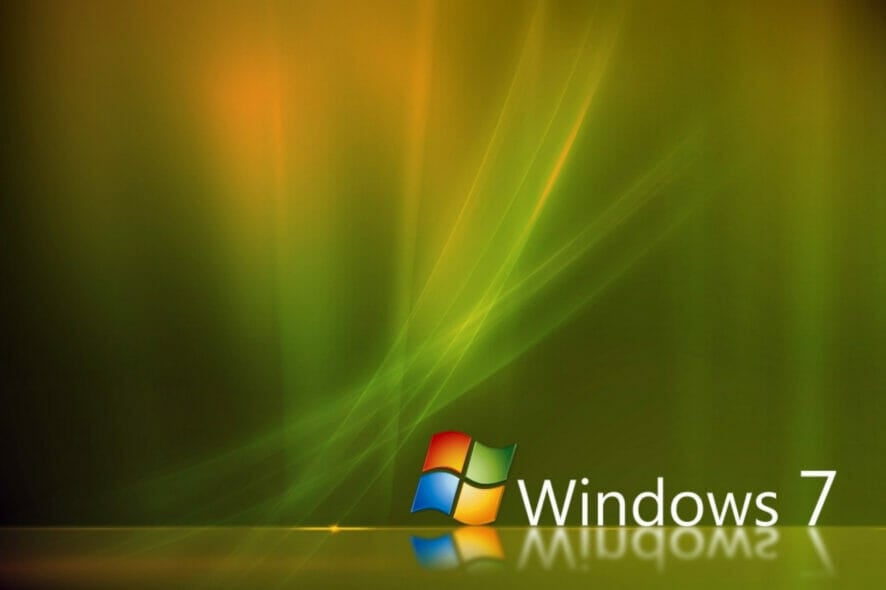Windows 7 February Patch Tuesday update now available
4 min. read
Updated on
Read our disclosure page to find out how can you help Windows Report sustain the editorial team Read more
Key notes
- Yes, Windows 7 also received a new security patch during this month's update rollout.
- So did Windows Server 2008 R2, and Windows Embedded Standard 7, in the same KB.
- We can also add Windows Embedded POS Ready 7 to this list, all of them out of service.
- However, there's a hefty list of prerequisites that you should check before downloading.

We know, lots of years passed since most of us left Windows 7 behind and moved on to newer, safer, more performant versions of the operating system.
And, seeing how we’re already using Windows 11 now, you can understand just how much time has actually passed ever since.
But Microsoft hasn’t forgotten about Windows 7 and Windows Server 2008 R2, Windows Embedded Standard 7, or Windows Embedded POS Ready 7, even though they have reached the end of mainstream support and are now in extended security update (ESU) support.
Thus, during this month’s Patch Tuesday rollout, the Redmond tech company also provided a cumulative update for users will on these versions.
What does KB5010404 bring to the table for Windows 7 users?
Anyone using the above-mentioned versions can now install the latest Patch Tuesday update, KB5010404, via the Windows Update tool.
Similar to the Windows 8.1 update, the Windows 7 update includes quite a number of improvements and fixes and a few known issues.
But, before we dive into some of the known issues plaguing this version of the operating system, let’s take a look at the improvements and fixes first:
- Updates daylight savings time to start in February 2022 instead of March 2022 in Jordan.
- Addresses SHA1 deprecation by removing specific SHA1-signed security and non-security fixes and resigned those fixes with SHA2 in this release.
- Addresses an issue in which a Lightweight Directory Access Protocol (LDAP) modify operation that contains the SamAccountName together with the UserAccountControl attributes fails with “Error: 0x20EF The directory service encountered an unknown failure.”
- Addresses an issue in which Windows Server 2008 R2 domain controllers (DCs) fail to process NTLM pass-through authentication.
- Adds an audit event on Active Directory domain controllers that identifies clients that are not RFC-4456 compliant. For more information, see KB5005408—Smart card authentication might cause print and scan failures.
Known issues
| Symptom | Workaround |
| After installing this update and restarting your device, you might receive the error, “Failure to configure Windows updates. Reverting Changes. Do not turn off your computer”, and the update might show as Failed in Update History. | This is expected in the following circumstances:If you are installing this update on a device that is running an edition that is not supported for ESU. For a complete list of which editions are supported, see KB4497181.If you do not have an ESU MAK add-on key installed and activated.If you have purchased an ESU key and have encountered this issue, please verify you have applied all prerequisites and that your key is activated. For information on activation, please see this blog post. For information on the prerequisites, see the How to get this update section of this article. |
| Certain operations, such as rename, that you perform on files or folders that are on a Cluster Shared Volume (CSV) may fail with the error, “STATUS_BAD_IMPERSONATION_LEVEL (0xC00000A5)”. This occurs when you perform the operation on a CSV owner node from a process that doesn’t have administrator privilege. | Do one of the following: Perform the operation from a process that has administrator privilege.Perform the operation from a node that doesn’t have CSV ownership.Microsoft is working on a resolution and will provide an update in an upcoming release. |
This is pretty much what we have to work with this month, in terms of Windows 7 security updates and fixes.
Now, provided your system is fairly up-to-date, you should be OK grabbing the update from the Windows Update default tool on your PC.
However, keep in mind that there’s quite a long list of prerequisites that you can check out on Microsoft Support under the section about how to get the update.
Are you still using one of the OS versions described in this article? Share your experience with us in the comments section below.








